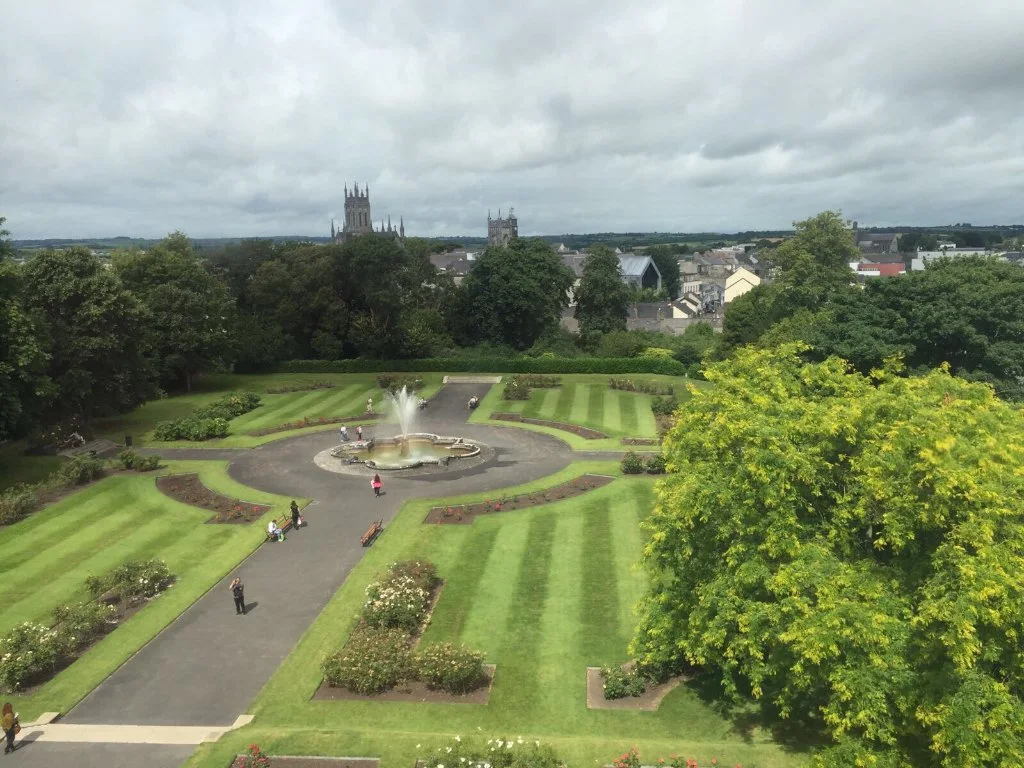On a high promontory overlooking the River Nore, Kilkenny Castle overlooks the city of the same name. The population grew around the fortification during the last 800 years, and even today it forms an integral and special part of their daily life.
 |
| Kilkenny Castle |
A recent reconstruction has made the Castle more accessible to visitors. Downstairs in the castle cellar is the Butler Gallery, which hosts regular exhibitions of contemporary Irish and international art, as well as a small restaurant open during the summer.
The strategic importance of the site, situated on a bend in the river, suggests that even before William Marshall began building the castle there in 1192, defensive structures already existed on the site occupied by the city. Subsequent reconstructions have obscured many aspects of the original structure, but the towers and adjoining fortifications date from the 13th century.
 |
| Kilkenny Castle |
William Marshall was the architect of the first Norman invasion of Ireland in 1190. Under him, Kilkenny became a powerful trading center. In 1391 ownership of the Castle passed to the Butlers, and later the Earls of Ormond, who controlled large areas of land in Ireland at the time. From then until now, this family has traces of kinship with the English monarchy.
A member of the family married a daughter of Edward II, and over the next few years various English monarchs, including Richard II, visited Kilkenny Castle. In 1650, Cromwell 's invading forces mounted an attack on the castle, and although it initially held out successfully, it eventually had to give in.
The Butlers were driven from their homes, and had to go into exile until the accession of Charles II in 1680, when they were given a dukedom in recognition of their loyalty to the crown. Apart from this brief period of time, the Butlers remained in residence at the Castle until 1936, for almost 600 years. They eventually relinquished ownership when they donated the Castle to the city of Kilkenny.
Although the castle underwent many changes, renovations and even rebuilding during the period it was occupied by the Butlers, its four original keep-fortresses remain largely intact. The main buildings are in the central courtyard, the south side of what was probably lost in the fifteenth century.
 |
| Kilkenny Castle |
The first major reconstruction was carried out by the 1st Duke of Ormond, after his return from exile, in 1680. Inspired by the French architecture he had seen, he not only altered the façade, but created the elegant gardens that are still today. a feature of the castle grounds.
Another period of renovation took place in the second half of the 19th century. The north and west wings of the castle were lavishly decorated in the Victorian style. The appearance of the castle changed, taking the main gate from the front to the north wing, where it crosses the gardens.
The most impressive room inside the Castle is undoubtedly the picture gallery on the first floor, decorated in a pre-Raphaelite style during the 19th century. Its wooden ceiling was crafted by John Hungerford, and is decorated with gilt dragons. Its walls are lined with portraits of the Butlers and a richly adorned Carrara marble fireplace.
Castle Park, as it is known today, is a popular hangout for Kilkenny 's youth. Their rose garden in the front, along the river, is lovely. It is a very quiet space to walk or have a picnic. The Castle is open every day of the year, from early morning until just before sunset.
